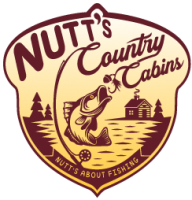Questions? Call 1-844-905-1001
Walleye

Walleye (Sander Vitreus) also goes by several other names such as: Yellow Pike, Yellow Walleye and Pickerel and some commonly referred to as “Eye”. The common name, "Walleye", comes from the fact that the fish's eyes point outward, as if looking at the walls. This externally facing orientation of the eyes gives anglers an advantage in the dark because a certain eyeshine is given off by the eye of the Walleye in the dark, similar to that of lions and other nocturnal animals.
This "eyeshine" is the result of a light-gathering layer in the eyes called the tapetum lucidum, which allows the fish to see well in low-light conditions. In fact, many anglers look for walleyes at night since this is when major feeding efforts occur. The fish's eyes also allow them to see well in turbid waters (stained or rough, breaking waters), which gives them an advantage over their prey. Walleye anglers commonly look for locations where a good "Walleye chop" (i.e., rough water) occurs. This excellent vision also allows the fish to populate the deeper regions in a lake, and they can often be found in deeper water, particularly during the warmest part of the summer and at night.
The Walleye are native to most of Canada and to the Northern United States especially common in the Great Lakes basin and in Northern Ontario. Although many refer to the Walleye as Pickerel, the Walleye fish is not truly related to Pickerels (who are a member of the Esocidae Family.). Walleyes are actually members of the Percidae family.
Walleyes are large, elongated fish with olive-green to brown colouring with paler sides with yellow flecks and a white belly. The mouth of a walleye is large extending below back edge of eye and is armed with many sharp teeth with large bulging eyes. The first dorsal and anal fins are spinous. Walleyes are distinguished from their close relative the Sauger by the white coloration on the lower lobe of the caudal fin, which is absent on a Sauger. In addition, the Walleye and Sauger share the same markings of black dots on the 2 dorsals fins and the caudal fin.
Walleyes grow to about 80 cm (31 in) in length and weigh up to about 9 kg (20 lb). The average length is 35.5 – 58.4 cm (14-23 inches) with the average typical weigh of 0.68 – 1.36 kg (1.5 – 3 pounds). The maximum recorded size for the fish is 107 cm (42 in) in length and 13 kg (29 lbs) in weight. Ontario Record: 10.1 kg (22.3 pounds). The current all-tackle world record for a walleye is held by Mabry Harper, who caught an 11.34-kg (25-lb) walleye in Old Hickory Lake in Tennessee on August 2, 1960. However, this keeps going back and forth within IGFA between Harper’s Walleye catch and Al Nelson’s Walleye catch of a 22-pound 11-ounce Walleye caught in Fairfield Bay on Greer’s Ferry Lake in Arkansas in 1982.
No matter their location, walleyes prefer packed sand, gravel or rocky bottoms and will use weed beds, submerged trees or other structures as cover during the day. They range in rivers and lakes, from cold clear waters to warm weedy and stained waters with soft mud bottoms with flooded timber, rubble or bedrock. They prefer cover structures or weeds, timbers and rocks due to their light sensitive vision.
Walleye adults migrate to tributary streams in late winter or early spring to lay eggs over gravel and rock, although open-water reef or shoal-spawning strains are seen, as well. Some populations are known to spawn on sand or vegetation. Spawning occurs at water temperatures of 6 to 10 °C (43 to 50 °F).
The eggs are slightly adhesive and fall into spaces between rocks. The incubation period for the embryos is temperature-dependent, but generally lasts from 12 to 30 days. After hatching, the free-swimming embryos spend about a week absorbing a relatively small amount of yolk. Once the yolk has been fully absorbed, the young Walleyes begin to feed on invertebrates, such as fly larvae and zooplankton. After 40 to 60 days, juvenile Walleyes will almost exclusively feed on fish just like the adult Walleyes, frequently Yellow Perch or Ciscoes, moving onto bars and shoals at night to feed. Walleye also feed heavily on Crayfish, Minnows, and Leeches.
Walleyes can live for decades with the average male living between 15-20 year. Female Walleyes live longer than males and the average female Walleye will live about 25 years or longer. The maximum recorded age is 29 years. However, in heavily fished areas you will rarely encounter a walleye older than 5- 7 years of age.
Since Walleyes have excellent keen eye for under low illumination levels, they tend to feed more extensively at dawn and dusk, on cloudy or overcast days, and under choppy conditions when light penetration into the water column is disrupted. Although anglers interpret this as light avoidance, it is merely an expression of the Walleyes' competitive advantage over their prey under those conditions. Similarly, in darkly stained or turbid waters, Walleyes tend to feed throughout the day. In the spring and fall, Walleyes are located near the shallower areas due to the spawning grounds, and they are most often located in shallower areas during higher winds due to the murkier, higher oxygenated water at around six feet deep. On calm spring days, walleyes are more often located at the deep side of the shoreline drop-off and around shore slopes around or deeper than 10 feet.
"Walleye chop" is a term used by walleye anglers for rough water typically with winds of 10 to 25 km/h (6 to 16 mph) and is one of the indicators for good walleye fishing due to the walleyes' increased feeding activity during such conditions. In addition to fishing this chop, night fishing with live bait can be very effective.
The Best time to fish for Walleye is in their primary feeding times, which start a little before sunrise and then at sunset and the last a few hours after each. But here at Nutt’s Country Cabins we are only a 2-minute drive from the boat launch of Lac Seul where the Walleye are practically jumping into your boat.
Of course, there are more lures than you can shake a jig stick at the main 4 basic types of baits for a successful day or night for Walleye fishing.
Jigs tipped with soft plastics with 1/8 to ¼ ounce jigs are good for clear, shallow waters. 3/8 to 5/8-ounce jig weight works well in deeper settings. Colours in Chartreuse, orange and green are popular colours.
Crankbaits – also known as plugs or divers are the hard-bodied lures that come in many sizes shapes and colours. There are hundreds of these available to choose from, but when fishing for Walleye look for ones that have a top to bottom roll or side flash, instead of the side to side wobble when they are reeled in. Look for bright coloured sides and dark backs. As these baits move forward through the water their colour and presentation are hard to resist for the Walleye.
Spinners – Using a spinner rig with the spinning action creates a vibration that mimics live prey with small brightly coloured beds to increase visibility and add a juicy night crawler, leech or minnow to the trailing hook and you’ve got yourself one of the best Walleye baits there is.
Live Baits - Some of the best walleye bait includes minnows, crawlers and leeches, easily the most popular live baits for catching walleye, but they can be picky eaters. If they’re not interested in their usual fare, frogs, salamanders, and crayfish can be appealing alternatives.
Angling tips for fishing Walleye
On Big Vermilion the Walleye population is not high due to the crystal clear waters and are sensitive light so if fishing on Big V for Walleye the best times to fish are morning and evening and cloudy or overcast days around the reefs would be your best chance of catching them. The opposite is true for Lac Seul as the waters on Lac Seul are tea stained and is locally known as the “Walleye Factory”.
They will take almost any bait or lure in the spring and feed well into the Fall. They are more challenging to catch in Summer and you will find them in deeper waters during this season. Casting or trolling with spinners or minnow-imitating plugs or trolling with a worm harness rig of spinners and beads are effective. Still-Fish, drift or troll live baits on slip-sinker or Bottom-bouncing rigs are also effective. Ice fishing for Walleye is a popular winter pastime throughout Canada and Northern United States; use jigs or jigging spoons with minnows or artificial minnows when ice fishing for Walleye.
There are special fishing regulations here in Zone 4 for Walleye, so please check out the fishing regulations before your trip at www.ontario.ca/fishing.
Wind: 8mph SW
Humidity: 76%
Pressure: 29.76"Hg
UV index: 3
81°F / 61°F
72°F / 52°F
Nutt's Country Cabins, 2076 Highway 664, Sioux Lookout, ON P8T 0A7
Copyright © 2019 NuttsCountryCabins.com | Privacy Policy | Website design by: Little Dragon Media

